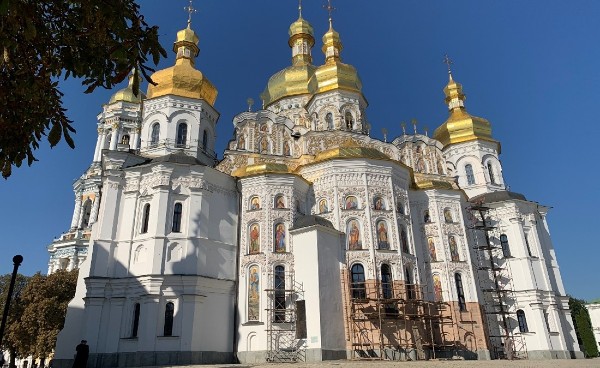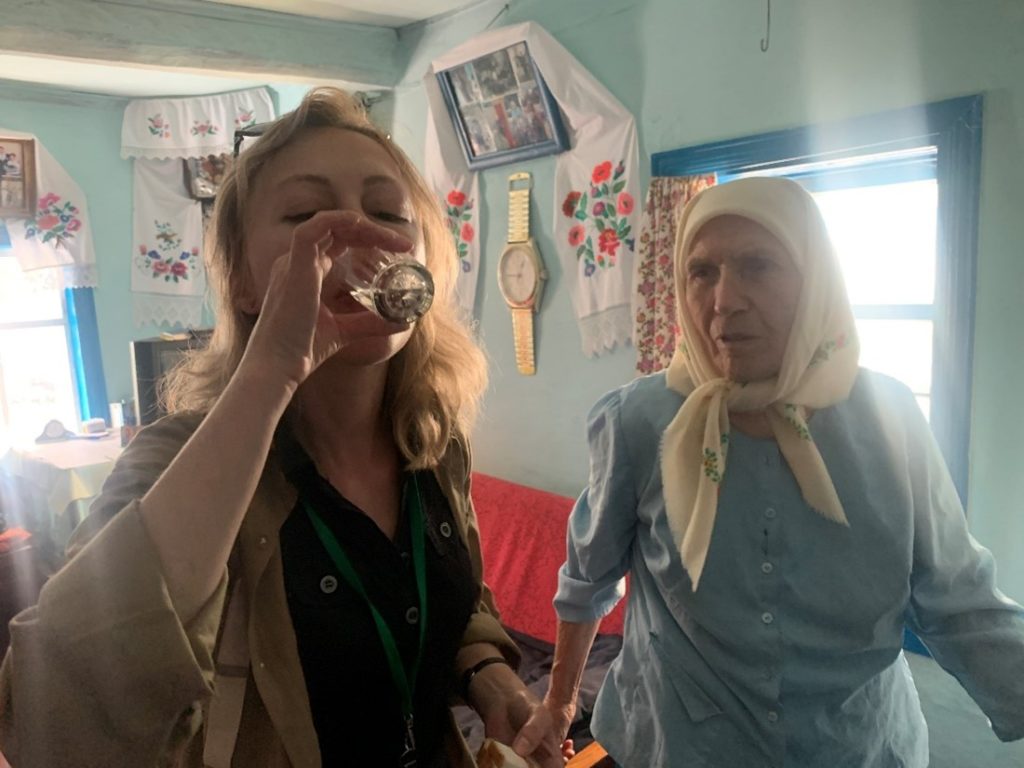
By Michael Weiland, Class of 1984
My wife has always been intrigued by abandoned and decrepit places. A few years back, she planned a trip for us to the Apostle Islands after viewing a piece on WGN about “Tom’s Burned Down Café” on Madeline Island. So when she saw that it was possible for tourists to visit Chornobyl – abandoned since 1986 – that put Ukraine onto our travel wish-list.
One cannot visit Chornobyl independently; you must be with a sanctioned guide, and I found a tour operator that fit. We’d meet our group in Kyiv on a Thursday, get a whirlwind Kyiv overview on Friday, and then Saturday and Sunday travel up to the “exclusion zone,” including an overnight in a “simple hotel” in Chornobyl. The guides carry radiometers and know which specific locations are safe and which must be avoided. (“Don’t step on moss”… “don’t touch the friendly stray dogs.”) It is said that a day in Chornobyl exposes one to the same amount of radiation one receives naturally on a trans-Atlantic flight.
Kyiv surprised me; I expected a sleepy, moribund ex-Soviet capital. Instead, the city was bustling, with plenty of traffic, nice shops, and busy restaurants. Dining and Ubers were very inexpensive relative to Chicago.
A few highlights in Kyiv itself:
- The Kyiv-Pecherska Lavra: an Orthodox monastery complex, dating to the 11th It includes some monumental church buildings, and caves in which 120 saints are lying in rest. It is a UNESCO World Heritage Site. We saw several other beautiful Orthodox churches, too.

- The “Motherland Monument,” built by the Soviets after World War II, atop a museum of WWII history. The monument is taller than the Statue of Liberty.

- Independence Square, commemorating Ukraine’s independence from the Soviet Union in 1991.
- The deepest subway station in the world, more than 100 meters below ground. Built during the Cold War, it was intended to be used as a bomb shelter, and it has been just that in February, 2022.
The area around the Chornobyl nuclear reactors is demarcated into two exclusion zones: a 10 km zone closest to the reactors, and a larger 30 km zone. The town of Chornobyl is itself not within the 10 km zone; the iconic images of abandoned buildings and facilities are instead from Pripyat. Pripyat was built, starting in 1970, as a planned “new town” for personnel working at the nuclear facility and their families; its population was almost 50,000 at the time of the 1986 reactor disaster.

As a model town, the USSR gave Pripyat facilities that typically would only be available in larger cities. A recreation center had an Olympic-caliber swimming pool. A new amusement park was scheduled to open on May Day 1986, less than a week after the disaster.
Not far from Chornobyl is the Cold-war era Duga radar facility. Its 10 megawatt transmitters were intended to provide an early warning for enemy (i.e. NATO) missile launches. Reportedly it never really worked, though shortwave listeners around the world could hear its signal and dubbed it “the Russian Woodpecker.”

Everyone living in the exclusion zones – about 200,000 people – was evacuated in 1986 within days of the disaster. Today, a small number of people have returned; only ex-residents over 50 years old are permitted to do so.
We visited an 80-year-old woman who has returned to her home (built 1951). The two-room house is heated by a wood stove. She has electric power but no running water; water is cranked up from a well. Our guide showed us that the radiation level there was tolerable – “lower than in Kyiv.”
More photos from Michael


CLICK HERE for more stories on The Bridge.










Excellent and informative article! I’m hoping the statues and beautiful churches survive Putin’s madness.
WOW, Michael, beautiful photos! When did you take this trip?
How sad that these places might have been damaged in this
stupid, stupid war. What a wicked guy Putin is!
Best,
Joan Fallert ’01
Joan – this was September, 2021 — just a few months ago.
Fascinating, Michael! Thanks for sharing.